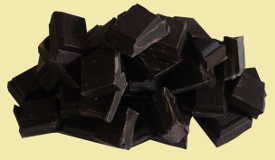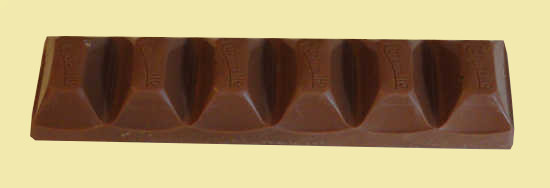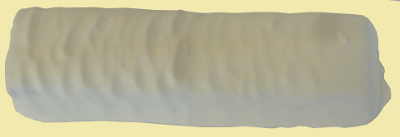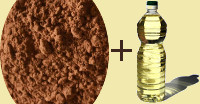Types of Chocolate
Ingredients and Differences
Dark, Milk, White, Imitation
Basically, there are three types of chocolate. Of course it seems like there are many more than that. But really, when you think about it, principally there are just three. The others are spinoffs from one of the basic types. Mainly by adding various flavorings, colorings, and varieties of chewy or crunchy ingredients.
Some of these additions are okay or even great. Like almonds, vanilla, raspberries or ginger.
Some, not so much. Like artificial fake imitation maple flavor. Vanillin. (Sounds like vanilla, right? But it is a chemical-factory reproduction of just ONE of the *many* natural chemicals that the vanilla bean puts into real vanilla flavor.) Red dye #40. And a many, many others.
Okay, what, you ask, ARE the three basic types?
Come on, you know this one:
Of course, even these basics come in infinite shades of brown. From almost black to almost white.
There is a fourth type, but I didn’t include it in the list because - by most legal definitions - it technically is not chocolate:
- Synthetic Chocolate
In many countries there are legal rules prescribing ingredient requirements for a product to be labeled with one of these categories. And these rules frequently disagree between countries. So yes boys & girls, that's right - a bar that can be called dark chocolate in the U.S. may not qualify in Europe, for example.
For the most part though, these differences are fairly minor.
So, let's consider the basic differences.
To begin with, when you look at three chocolate bars and think about which one to eat, what's the most obvious difference? Of course that's color, but by itself color is just appearance, not substance.
So how else do they differ?
The three basic types of chocolate differ substantially not only in color but also in aroma, taste, and nutrition. Perhaps you aren't so influenced by their color (except through force of habit), but more so by their taste and aroma.
But, did you think nutritional quality - their healthiness (or lack thereof) - was pretty much the same? Not so.
Here's the general healthiness hierarchy:
|
|
 |
Healthiest |
 |
Middle | |
 |
Less | |
|
Imitation chocolate |
 |
You mean that artificial fake imitation sort-of chocolate-like stuff? Why are you even asking? Just say no. |
Of course within each category
there is a lot of variation in health/nutrition. These differences
depend mostly on the ingredients used and their quality. But
nutritional quality can also be sacrificed to less-expensive processing
methods that seek to speed manufacturing without regard to the effect on
chocolate's many health-enhancing micronutrients. Notably, use of too
much heat.
Ingredients used in chocolate fall into two categories:
• Ingredients in the actual chocolate itself - that is, what parts of the chocolate bean are used.
• Ingredients added to the actual chocolate - for example milk, sugar, almonds, vegetable oil.
Both categories of ingredients are responsible for the distinctions among the types of chocolate, so let's look at each one.
The three types of chocolate:
Milk Chocolate
Dark Chocolate
White Chocolate




